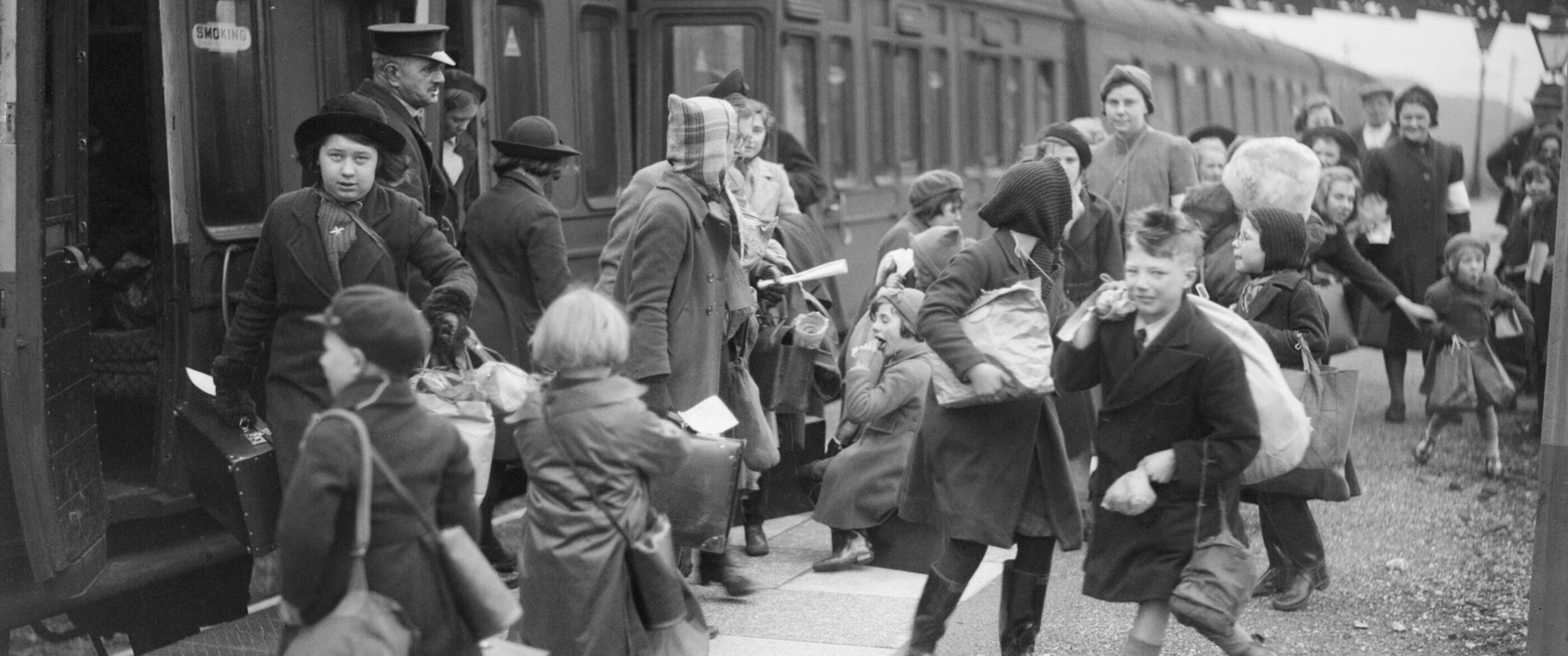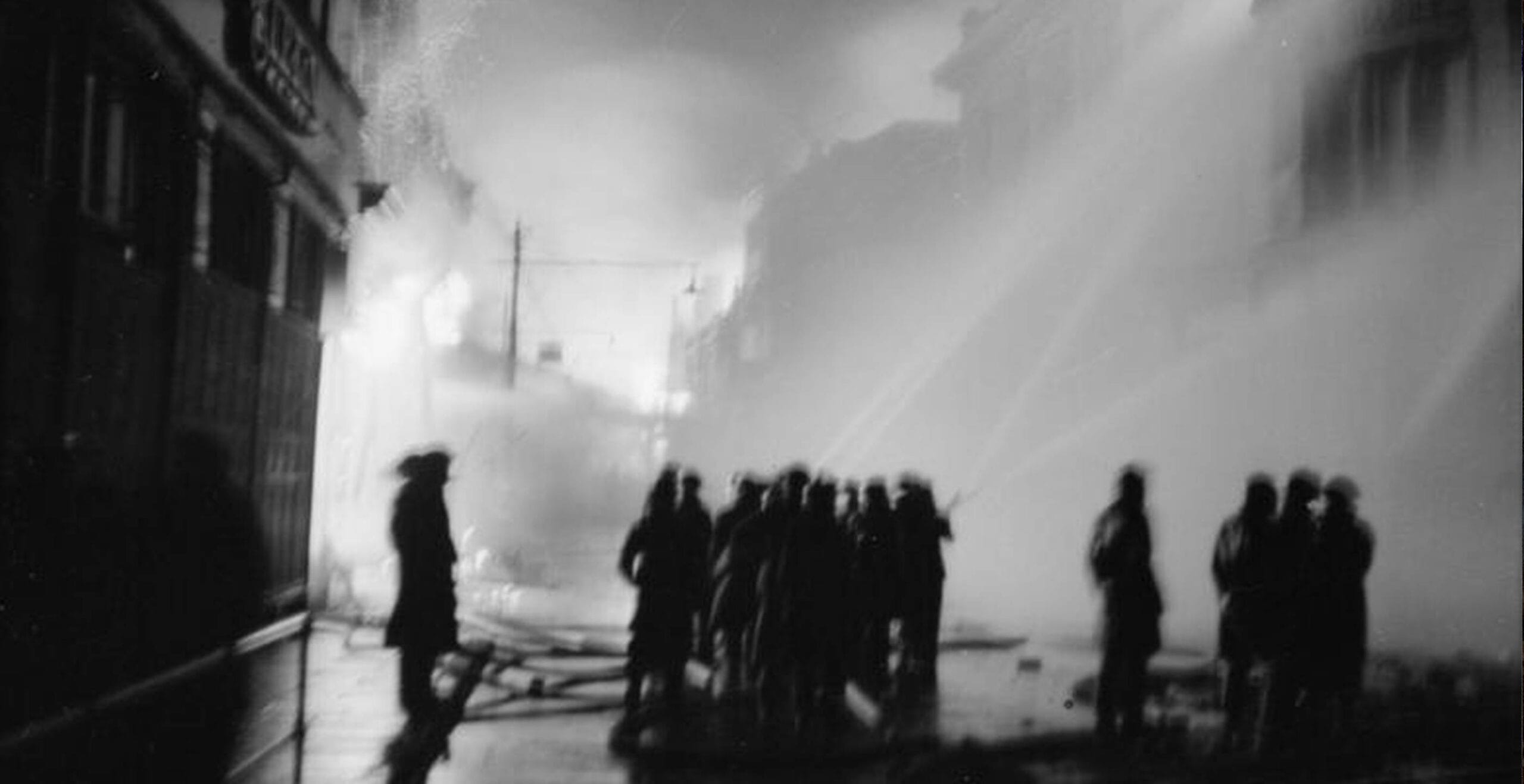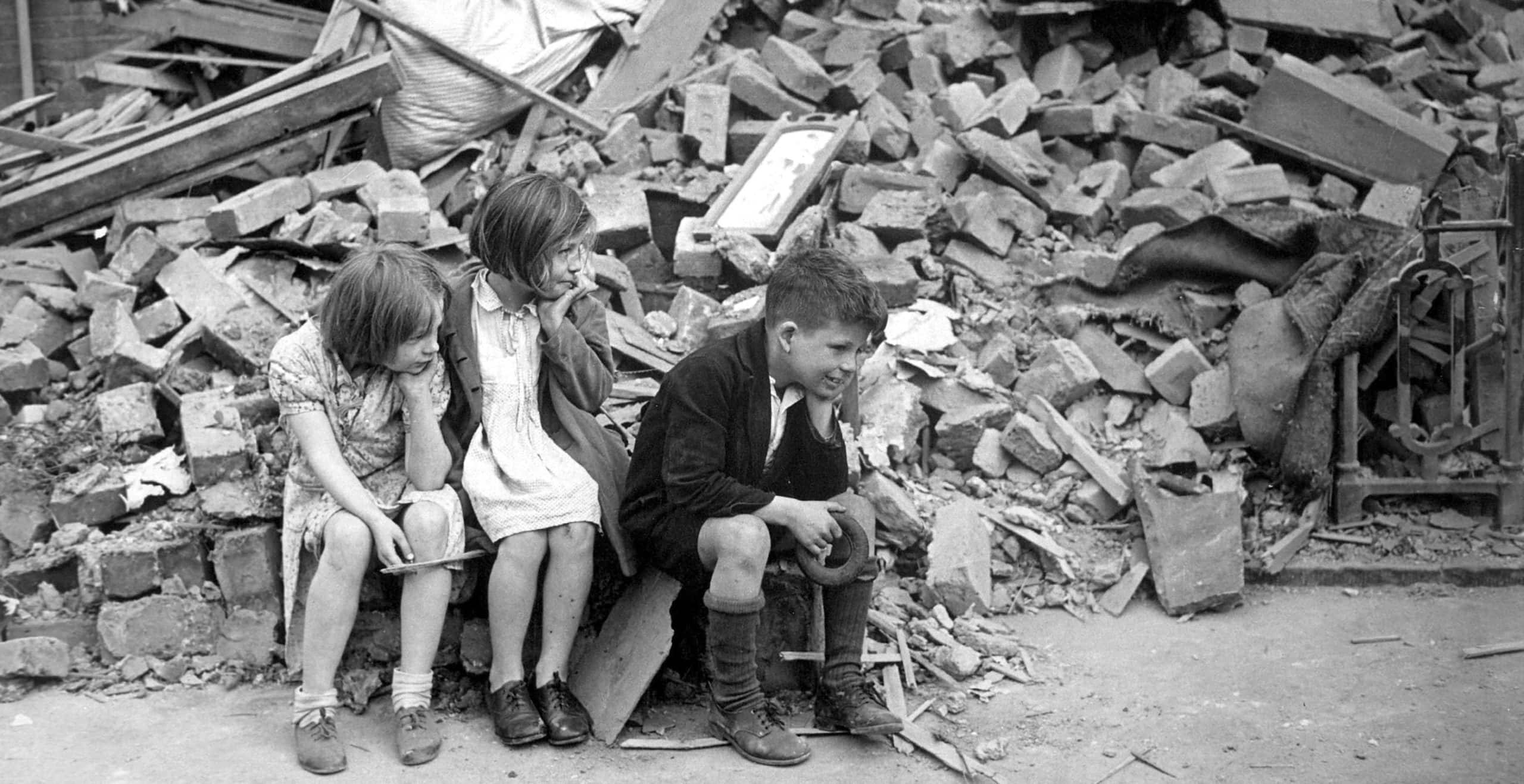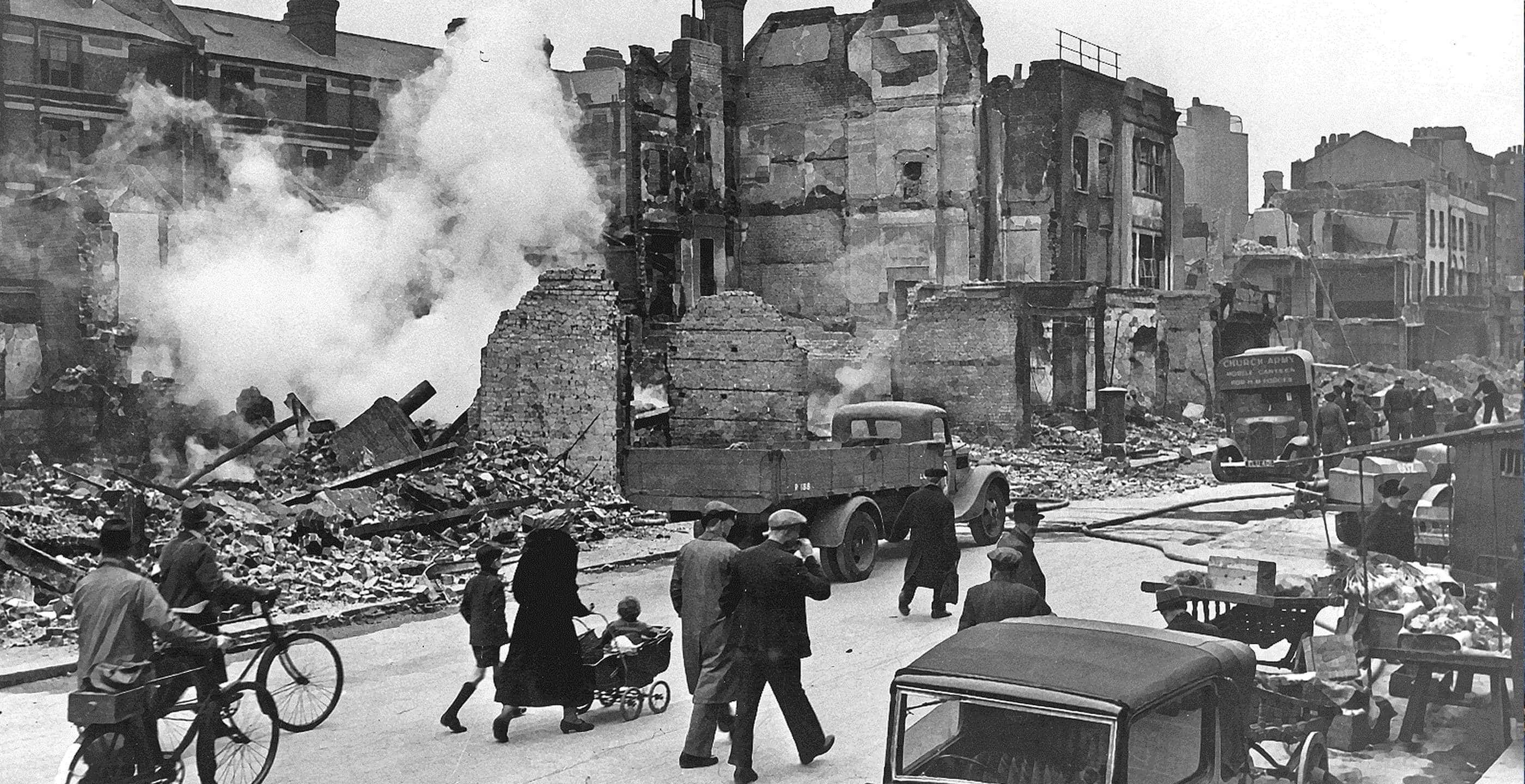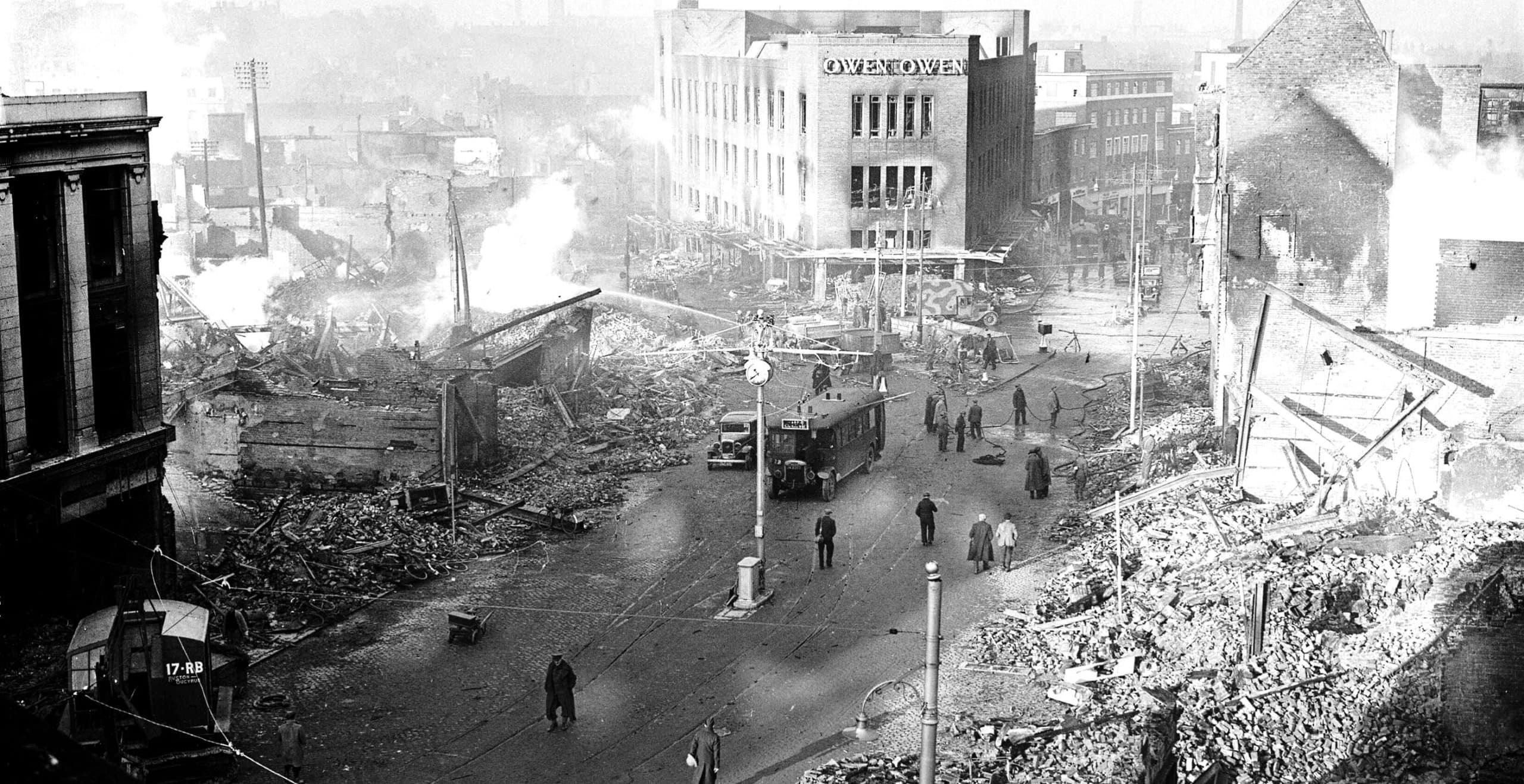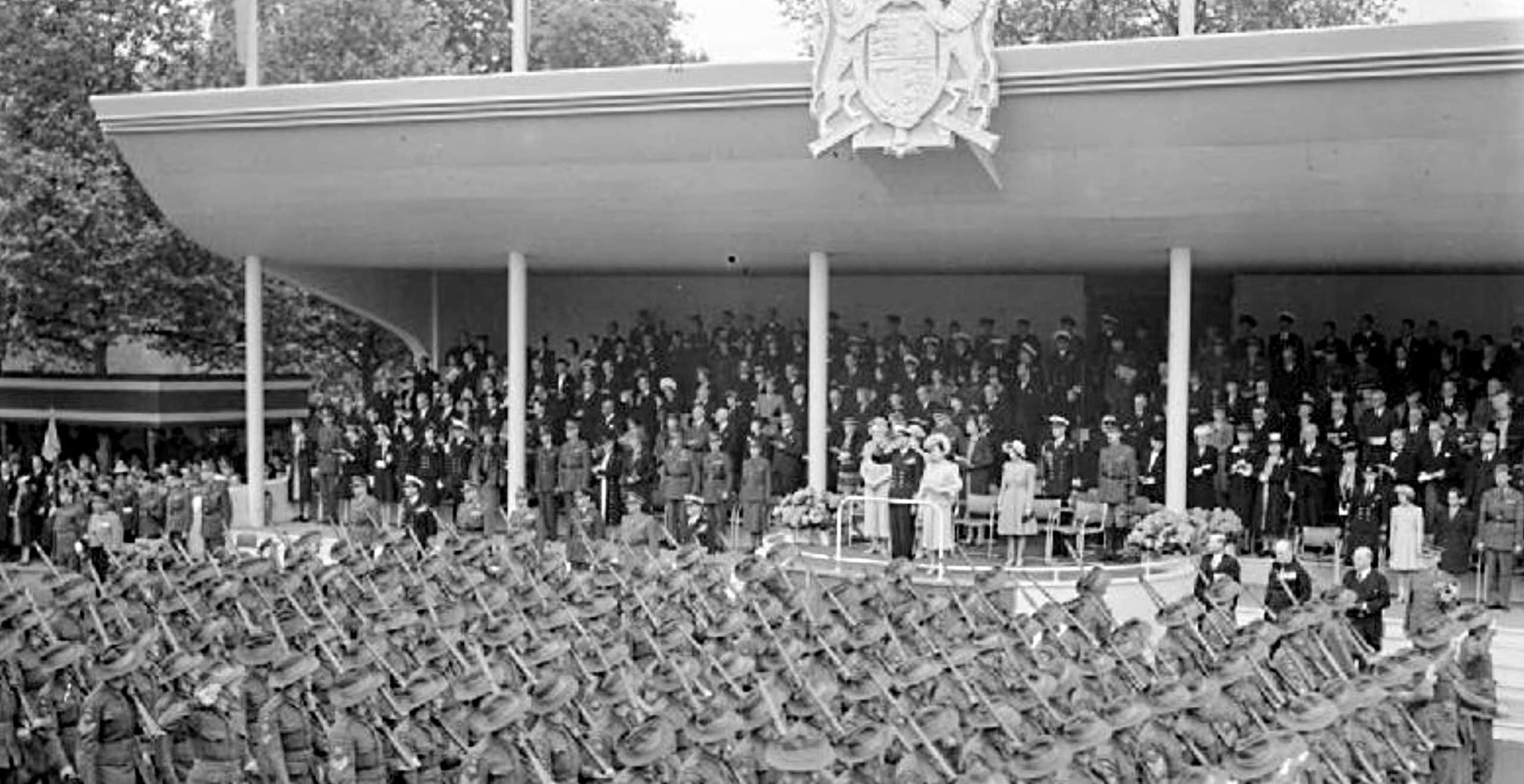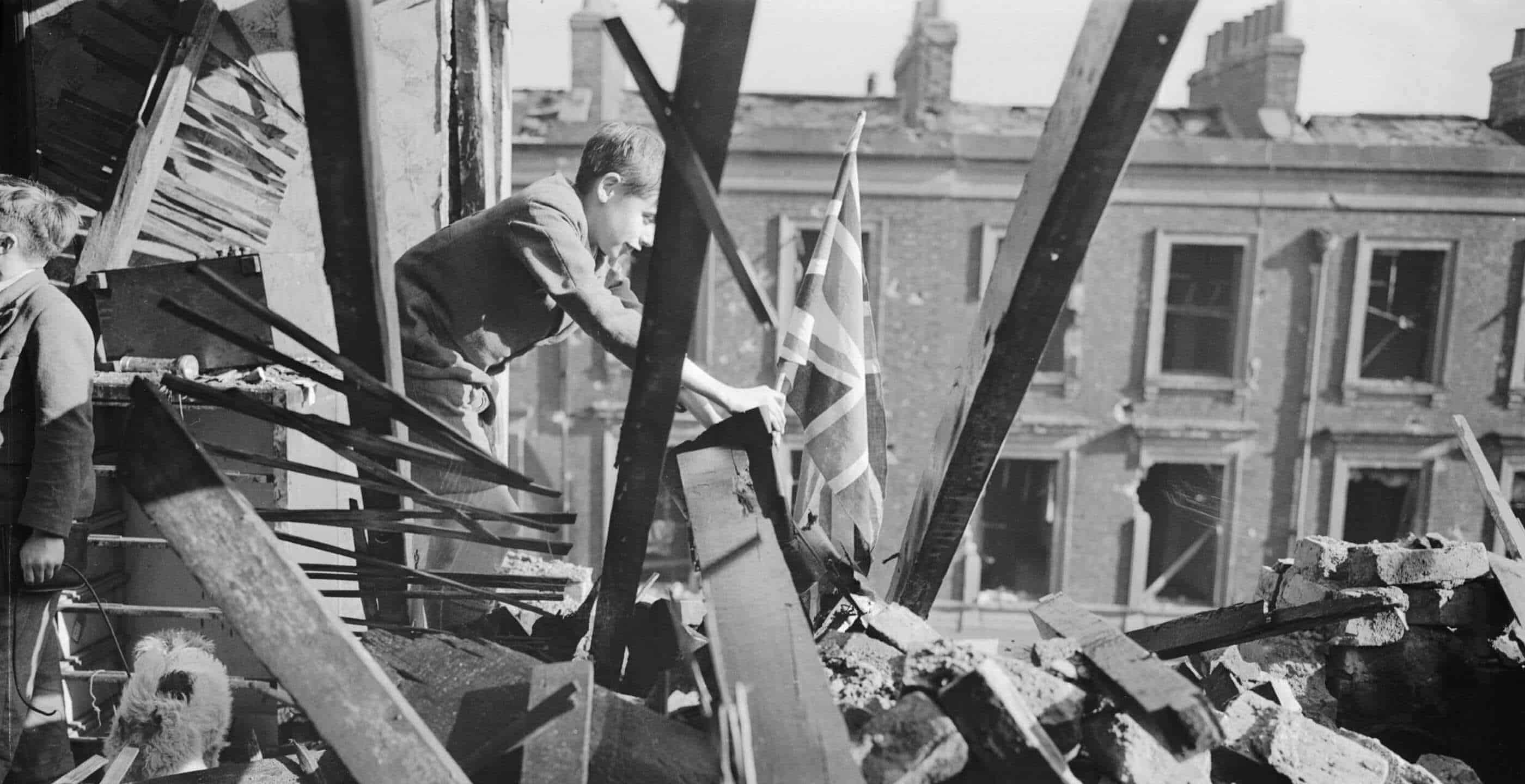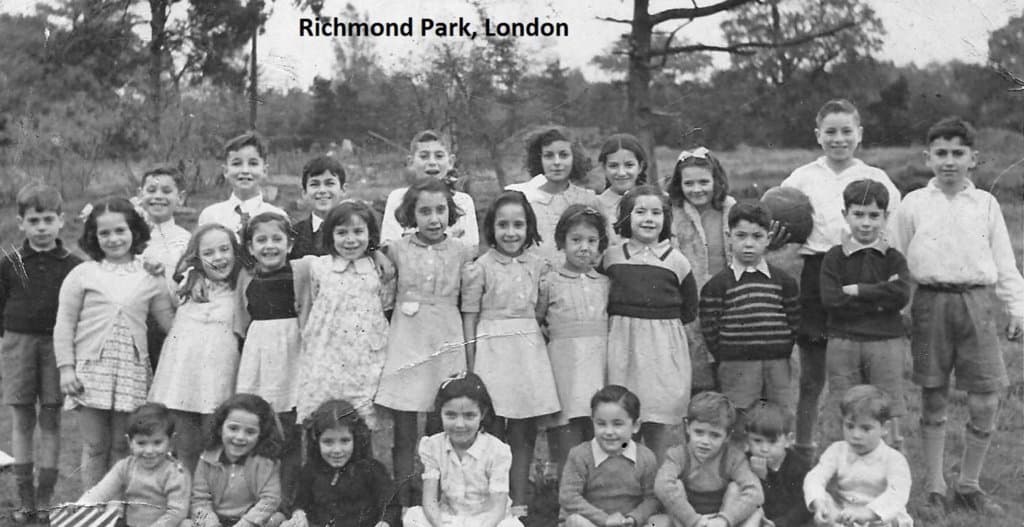On 1st September 1939, Operation Pied Piper came into effect, executing the enormous task of evacuating almost 1.5 million people out of harm’s way during the Second World War. These planned evacuations involved predominantly children who left their family homes, often in the cities which were most at risk from aerial bombing and started a new life, a wartime life, in the countryside in a new home and with strangers.
Such a large scale operation, the first of its kind, involved a massive amount of logistics as it was the most concentrated movement of people in the history of the country. Whilst this was the first case of official evacuation, plans for such an enormous operation had been in the pipeline for a long time. During the First World War, the experience of bombardments in British cities up and down the country resulted in enormous casualties and loss of life, many of the victims being women and children. This experience alerted the authorities as to the very real dangers to the most vulnerable in society. By the end of the war, serious discussion involving the defence of the home front was high on the agenda. By 1924, the Committee of Imperial Defence formed a sub-committee which was dedicated the issue of protecting civilians and was led by Sir John Anderson who headed the Committee on Air Raids Precaution.
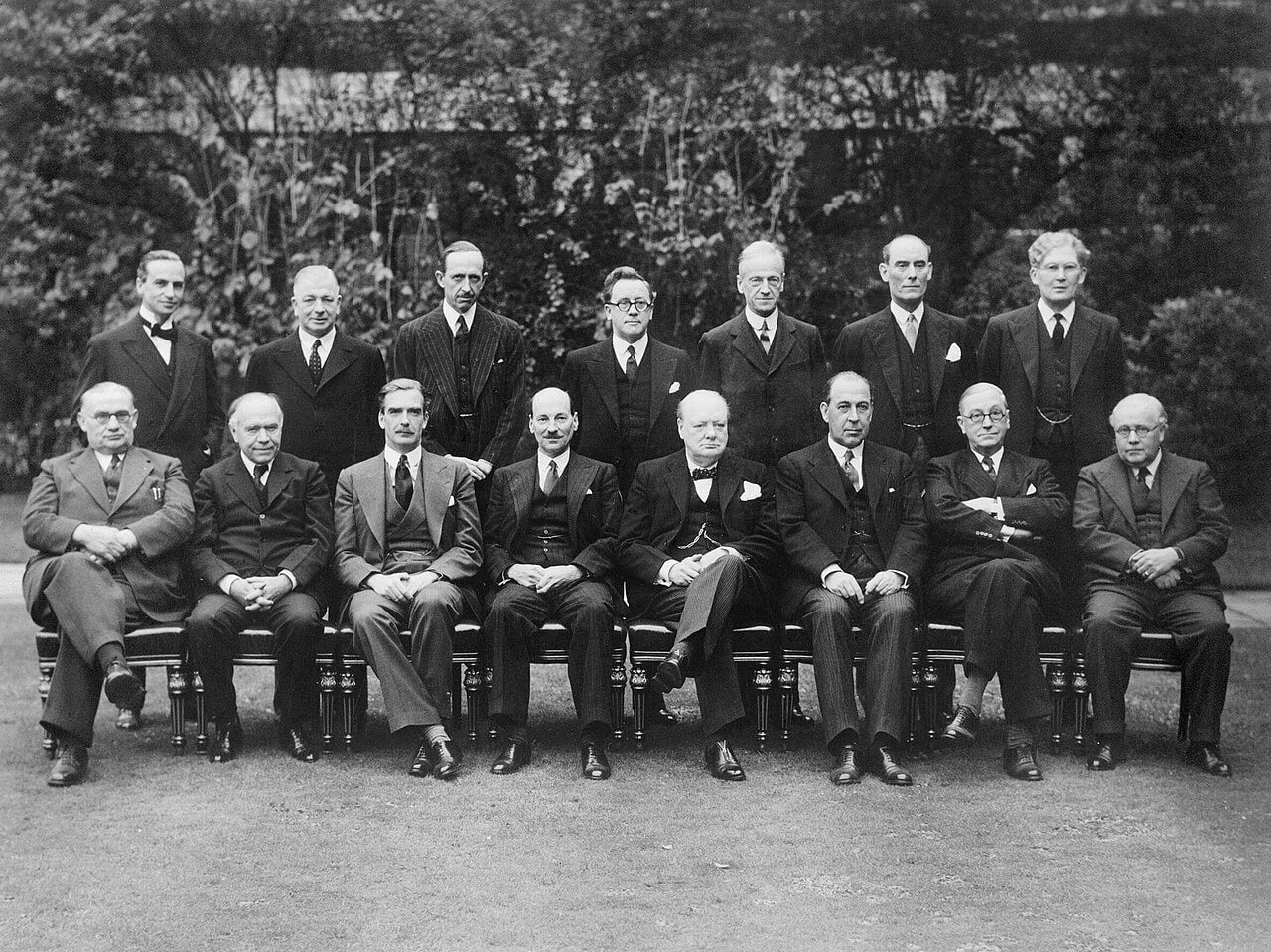
The subsequent air-raid shelters which became ubiquitous during the Second World War, known as Anderson shelters, were named after him. Procedures such as the use of shelters and gas masks for civilians were all discussed as part of the committee’s efforts to reduce civilian casualties during aerial bombardments. By 1931, these efforts led to the creation of another sub-committee dedicated to evacuation and headed by Sir Charles Hipwood. Many of the early discussions were based unsurprisingly on London and the necessary evacuations from the capital. During the 1930s, the febrile political climate grew more alarming and as a result by 1938 the Anderson Committee published its evacuation report which detailed the priority for schoolchildren and mothers with young infants to leave the cities for the safety of the countryside.
The premise was for private family homes to be used as hosts, however the Camps Act which was passed in 1939 allowed for the building of residential camps for young people, accommodating the welfare needs of children and staff and scattered over several rural locations. Local billeting officers were given the task of finding suitable host families who were interviewed and chosen for the role. Once appointed, a host was forced to take an evacuee and subsequently received payment for it, if they refused to participate, a fine would be issued.
Many people from a variety of sectors were responsible for putting the plans together, including the police and also teachers. By the summer of 1939, the plan for mass evacuation was ready to be enacted. On 1st September 1939, Operation Pied Piper was initiated. Two days later, Britain and France declared war on Nazi Germany. Whilst the capital city was a main focus for evacuations, other cities experienced a similar operation including major industrial hubs such as Manchester and Birmingham in the north of the country and Glasgow in Scotland. Such an enormous undertaking resulted in a massive strain for all the major train stations and routesout of the cities. Pictures of children filling platforms, with tags and carrying a gas mask have since become synonymous with this time.
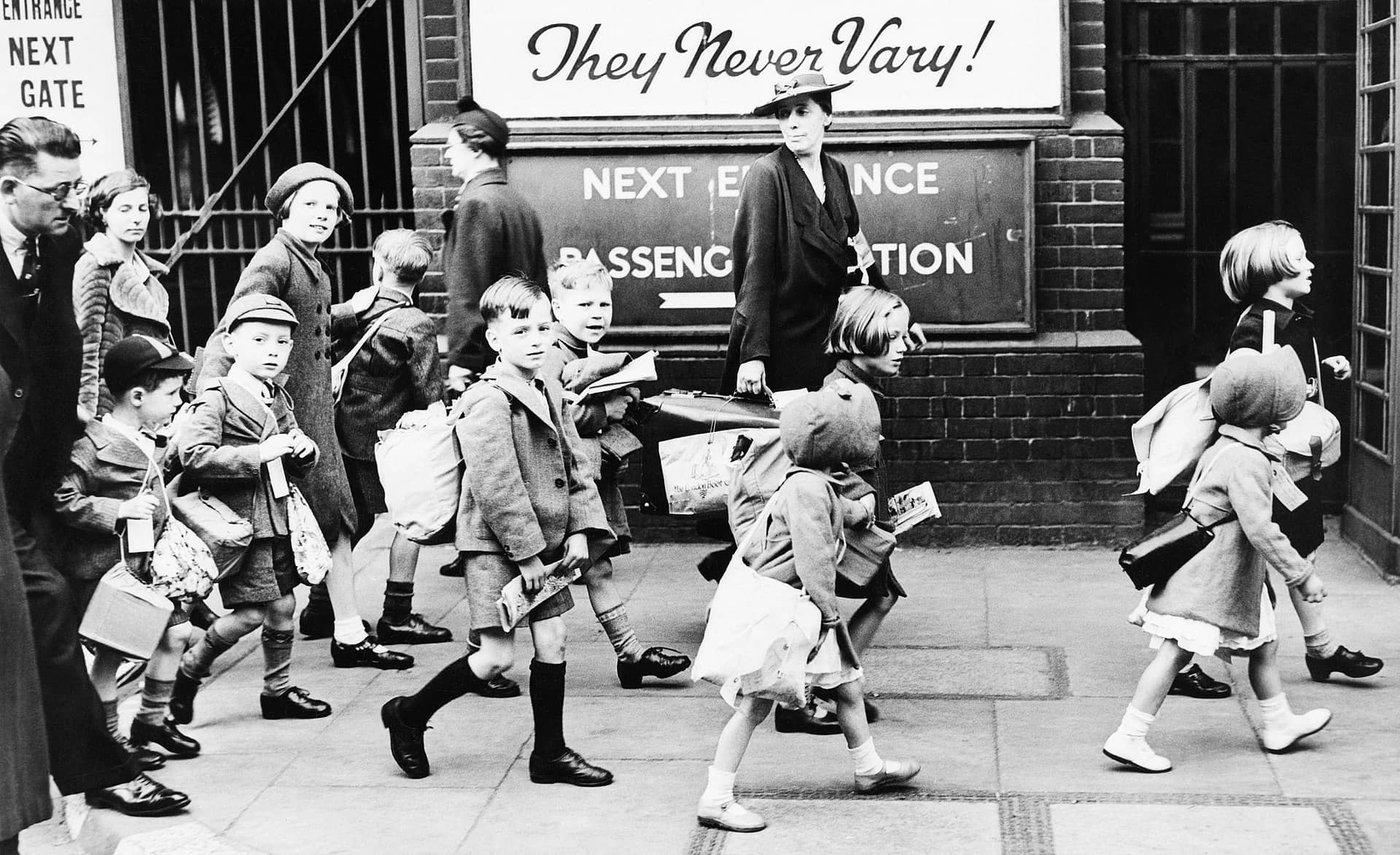
Sadly, such a large-scale operation would inevitably encounter failures in organisation and implementation. Whilst the press reported a successful four days of mass evacuations, the reality proved to be much more chaotic and traumatic for the children. Firstly, without a specified foster family, many of the children were simply picked out of a crowd leading to the horrible experience of rejection for those children picked last. Moreover, travelling to the countryside was for some of the children their first experience of rural Britain, having grown up in the overcrowded poor conditions of cities up and down the country.
As later recollections would reveal, the experiences of these evacuees varied enormously depending on their host. Whilst some had pleasant memories to take from countryside adventures, others had been subjected to abuse and unsurprisingly suffered greatly from bouts of homesickness. Moreover, some parents were keen to see their children return to their family home, leading to a propaganda campaign to discourage parents from making such a choice. Often the children were from working class disenfranchised communities, whilst their rural hosts were wealthy, with large homes and from middle and upper class backgrounds. Such a unique and unprecedented operation resulted in a culture clash for some.

After the initial evacuation, another wave followed in 1940 with the advent of the Blitz, followed by a third and final programme of evacuation. In September 1940, not only children were evacuated but also the most vulnerable in society including the elderly, ill, disabled and pregnant women. Efforts to evacuate before the worst effects of the Blitz were felt on the city of London resulted in the reduction of the city’s population by 25%. Whilst the main destination for most evacuees was the English countryside, others were funded to travel overseas, such as to the United States and even further afield to Australia and New Zealand.
The scheme was for some voluntary and others enforced, which has since led to reports of cruelty and neglect. The enormity of the project and unprecedented nature of Operation Pied Piper was abused and misused by some with bad intentions who participated in the scheme. After the war came to its conclusion, experiences were shared detailing the trauma and ill-treatment. This was just one of the unintended consequences of mass evacuation carried out during WWII.
One of the creative outlets for such experiences came in the form of literature as the mass evacuation programme inspired a wealth of stories for children and young adults.
Childhood experiences became a favoured topic in literature with evacuees serving as the main protagonists in classic novels such as, “The Lion, the Witch and the Wardrobe” by C.S Lewis. Understanding and appreciation of childhood experience and mental health grew higher on the agenda and gained more traction at this time as the necessity for increased state involvement to ensure the wellbeing of children, with a particular focus on their mental health became paramount. Moreover, the exposure of certain medical and mental health issues suffered by evacuee children shed a light on the disparities inherent within the very rigid British class structure.

Political solutions particularly focused on the welfare system dictated policy concern for the Labour Party under Attlee. As the war was in its final months, most areas began to halt the evacuation programme apart from London and some vulnerable areas along the south eastern coastline. By the end of the war, evacuation was drawing to a close and families were finally reunited.
Whilst Operation Pied Piper was deemed to be a success, with many children escaping the danger of the city for the relative safety of the countryside, many young lives were impacted by abuse, trauma and less than positive experiences. Mass evacuation was a necessary and experimental operation with many variables and logistical opportunities to fail. The reality of Operation Pied Piper and the stories of evacuees forms an important part of the wider story of World War Two on the home front, a necessary tale of wartime effort, preparation, logistics and the desire to protect an innocent civilian population.
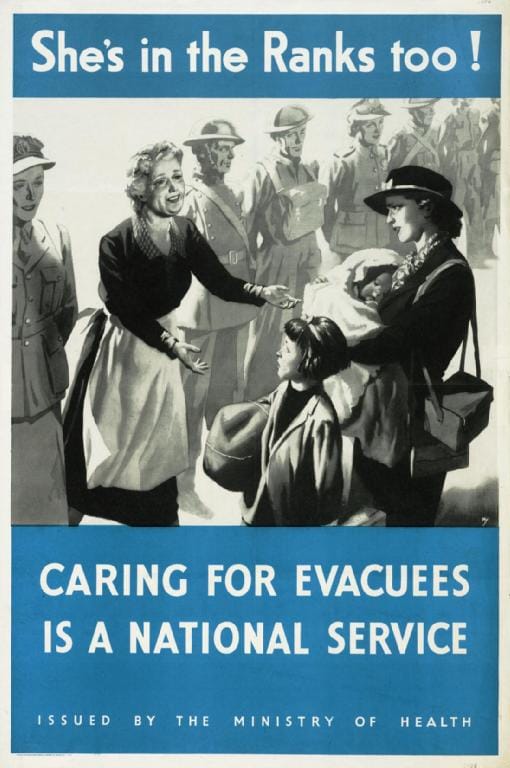
Jessica Brain is a freelance writer specialising in history. Based in Kent and a lover of all things historical.
Published: 15th July 2024.
